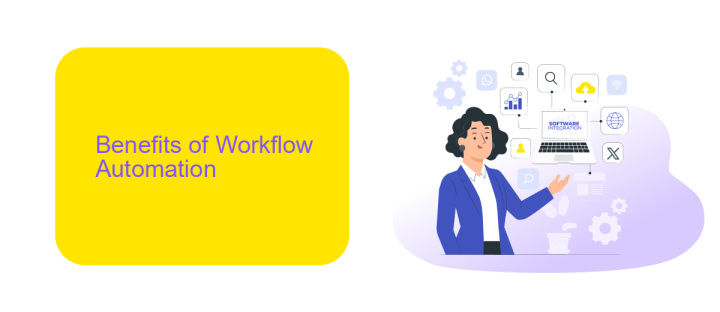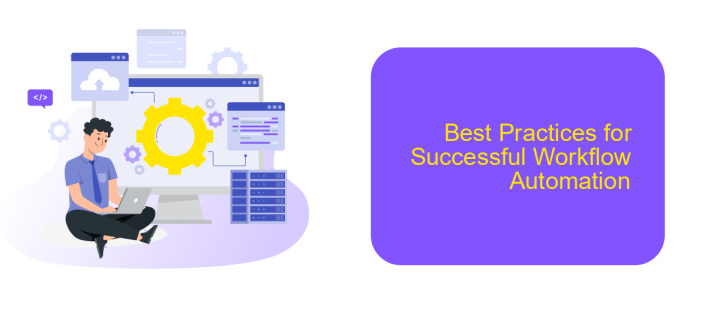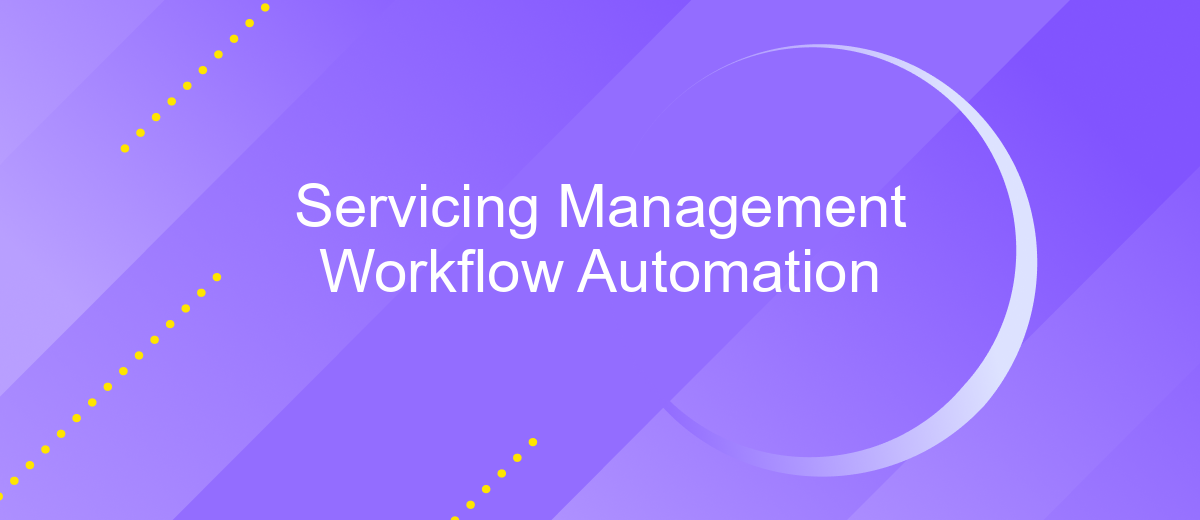Servicing Management Workflow Automation
In today's fast-paced business environment, optimizing servicing management workflows through automation is essential for enhancing efficiency and reducing operational costs. This article explores the transformative impact of workflow automation on servicing management, highlighting key benefits such as improved accuracy, faster processing times, and enhanced customer satisfaction. Discover how leveraging advanced technologies can streamline your operations and drive sustainable growth.
Introduction
In today's fast-paced business environment, efficient management of servicing workflows is crucial for maintaining competitive advantage. Automation of these workflows not only streamlines operations but also reduces human error, enhances productivity, and ensures compliance with regulatory standards. By leveraging advanced technologies, organizations can transform their servicing management processes to be more agile and responsive.
- Improved accuracy and reduced manual errors
- Enhanced productivity and operational efficiency
- Better compliance with regulatory standards
- Increased agility and responsiveness
One effective tool for achieving workflow automation is ApiX-Drive, a service that facilitates seamless integration between various software applications. By automating data transfers and synchronizing tasks across different platforms, ApiX-Drive enables businesses to maintain a cohesive and efficient workflow. This integration capability is essential for organizations aiming to optimize their servicing management processes and achieve significant operational improvements.
Benefits of Workflow Automation

Implementing workflow automation in servicing management can significantly enhance operational efficiency. By automating repetitive tasks such as data entry, scheduling, and reporting, teams can focus on high-value activities that require human intervention. This shift not only reduces the potential for human error but also accelerates service delivery, leading to improved customer satisfaction. Additionally, automated workflows ensure consistency and compliance with industry standards, which is crucial for maintaining quality and reliability in service management.
Another major benefit of workflow automation is the seamless integration of various tools and platforms. Services like ApiX-Drive enable businesses to connect different applications without the need for extensive coding or technical expertise. This facilitates real-time data exchange and synchronization across systems, enhancing visibility and control over the entire service process. By leveraging such integrations, companies can streamline operations, reduce manual workload, and ultimately achieve greater scalability and flexibility in their service management practices.
Key Considerations for Implementing Workflow Automation

Implementing workflow automation in servicing management requires careful planning and consideration to ensure a smooth transition and effective operation. Understanding the key factors that influence the success of automation can significantly enhance efficiency and productivity.
- Identify Key Processes: Determine which processes are most suitable for automation. Prioritize tasks that are repetitive, time-consuming, and prone to human error.
- Integration with Existing Systems: Ensure that the automation tools can seamlessly integrate with your current systems. Services like ApiX-Drive can facilitate smooth integration by connecting various applications and data sources.
- Scalability: Choose automation solutions that can scale with your business growth. This ensures that the system remains efficient as the volume of tasks increases.
- Compliance and Security: Ensure that the automation processes comply with industry regulations and maintain high-security standards to protect sensitive information.
- Employee Training: Provide adequate training for employees to adapt to the new automated processes. This helps in minimizing resistance and maximizing the benefits of automation.
By considering these factors, organizations can implement workflow automation in servicing management effectively, leading to enhanced operational efficiency and reduced manual workload. Proper planning and the right tools, such as ApiX-Drive for integration needs, play a crucial role in the successful adoption of automation.
Best Practices for Successful Workflow Automation

Implementing successful workflow automation requires a strategic approach to ensure efficiency and effectiveness. Begin by thoroughly analyzing your current processes to identify repetitive tasks that can be automated. This will help you understand which areas will benefit most from automation.
Next, choose the right tools and platforms that align with your business needs. Platforms like ApiX-Drive can be invaluable for integrating various services and automating workflows seamlessly. Ensure that the tools you select are user-friendly and offer robust support and documentation.
- Start with simple tasks and gradually move to more complex processes.
- Regularly monitor and evaluate the performance of automated workflows.
- Ensure proper training for staff to handle and manage the new automated systems.
- Keep data security and compliance in mind while automating workflows.
Finally, maintain flexibility in your automation strategy. Business needs and technologies evolve, so be prepared to adapt and refine your workflows. Continuous improvement and feedback loops are essential to sustaining the benefits of workflow automation over the long term.
Future Trends in Workflow Automation
As technology continues to evolve, the future of workflow automation in servicing management is poised for significant advancements. Artificial Intelligence (AI) and Machine Learning (ML) are expected to play a crucial role in predicting maintenance needs and optimizing service schedules. These technologies will enable systems to learn from historical data and make real-time adjustments, enhancing efficiency and reducing downtime. Additionally, the integration of Internet of Things (IoT) devices will provide real-time monitoring and diagnostics, allowing for proactive rather than reactive service management.
Another trend is the increased emphasis on seamless integration between various software applications and platforms. Tools like ApiX-Drive are becoming essential, as they enable businesses to automate workflows by connecting disparate systems without the need for complex coding. This not only streamlines operations but also ensures data consistency and accuracy across platforms. Furthermore, the rise of low-code and no-code automation solutions will democratize workflow automation, making it accessible to non-technical users and fostering innovation across all levels of an organization.
FAQ
What is Servicing Management Workflow Automation?
How can workflow automation benefit my service management?
What kind of tasks can be automated in service management?
How difficult is it to implement workflow automation in service management?
Can I integrate workflow automation with my existing service management tools?
Apix-Drive is a simple and efficient system connector that will help you automate routine tasks and optimize business processes. You can save time and money, direct these resources to more important purposes. Test ApiX-Drive and make sure that this tool will relieve your employees and after 5 minutes of settings your business will start working faster.

